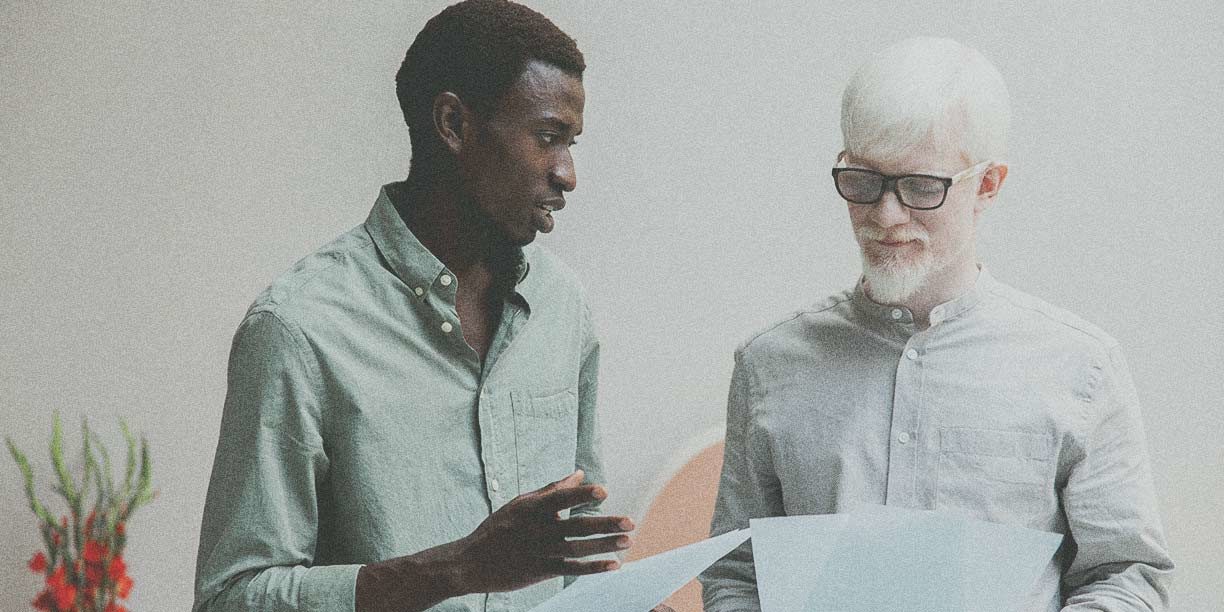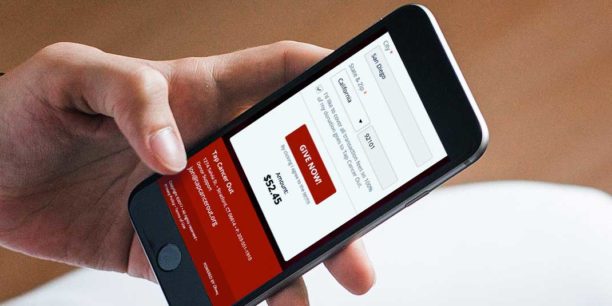Strengthen Your Nonprofit Corporate Giving Programs

As a nonprofit organization, it’s crucial to have multiple sources of fundraising revenue. And with the rise of CEOs who prioritize Corporate Social Responsibility Programs (CSRs), it’s essential to have an excellent corporate partnership strategy with a multipronged approach.
Today, we’re highlighting the impact of a solid corporate giving program on your ability to acquire and retain valuable nonprofit sponsorships. We’ll talk about how to become a preferred nonprofit partner by giving corporations more ways to get involved in your mission.
Get ready to maximize your relationships and see the most value from forward-thinking corporate philanthropy.
The Trajectory of Corporate Philanthropy
Strategic nonprofit partnerships offer many attractive benefits. From improving outreach efforts and advocacy to enhancing programs and services, there are many ways that an alliance can help your organization enhance its efficacy, impact, and sustainability.
The first step to strengthening a partnership is to be clear about what you want to get out of it. Below, we’ll help you identify and clarify your nonprofit organization’s goals with a few ways to be a strong nonprofit partner with for-profit businesses.
Corporations Want Deeper Connections With Nonprofits
Corporations look for opportunities to demonstrate support for causes near and dear to them and treat nonprofits as an extension of CSR and marketing functions.
We’re seeing more and more that our partners don’t just want to write a check and walk away. They’re looking for ways to get truly involved in the mission and find ways that our mission and our programs can align with what their employees are involved in. Our relationships are becoming much more personal and much more customized.
It makes sense that for-profit companies are more invested in philanthropic efforts when 77% of consumers are more motivated to purchase from brands committed to improving the world.¹ That’s why an estimated 90% of companies on the S&P 500 respond to customer desires by publishing a CSR report each year.²
Take advantage of these companies’ appetite for philanthropic involvement by offering mutually beneficial opportunities. Highlight timely donation requests, volunteer opportunities, and peer-to-peer fundraising campaigns corporations can support to help you scale.
How to Think Ahead to Nurture a Strong Corporate Nonprofit Partnership
Here’s a checklist to strengthen your corporate sponsorships.
- Amplify your mission and values: Use successful partnerships to showcase your organization’s mission and core values to new audiences. Solidify your position as a dedicated nonprofit in your niche and remain consistent with the fundraising approaches and messaging that resonate with your supporters.
- Define what you want to accomplish: Look at what worked well in past partnerships and push the boundaries of possibility. Define what you want to accomplish and keep mutually beneficial goals front and center.
- Create a repeatable offering for partnerships: Employ a structure you can use across multiple partners, recognizing that each partnership will have unique goals. Some may be more interested in sustaining programs year-round, while others may be more interested in supporting crises. On the other hand, some may have products to donate, while others may want to get employees involved in fundraising and volunteer efforts.
- Demonstrate the impact of your partnerships: Put together a nonprofit annual report for donors, just as you would with corporate partners, establishing a clear view of what you jointly achieved over a year. Outline clear nonprofit metrics to evaluate your efforts and see what you can improve or change to get closer to your goals. Showcasing your collective results helps them know the value of the partnership and share that with employees and networks.
6 Ways to Strengthen Nonprofit Partnerships
1. Event Sponsorships
Bring corporate partners in to provide financial support for a larger-scale event such as a fundraiser gala or endurance event. A sponsored event is a great avenue to bring your aligned vision to life intimately and authentically.
Just remember, the key to a successful event is to make it easier for corporate partners to get involved, showcase their brand, and invite their employees and audiences that seek a more interactive giving experience.
- Make the ask: Create a sponsorship proposal letter that’s informative and persuasive. Use this sample letter for sponsorship for a head start on your outreach. After all, asking for sponsorship is all about making a good impression.
- Offer enticing branding opportunities: Feature the corporate sponsor’s logo on your event page using modern fundraising event software. You might even think about placing sponsor branding in the virtual venue through a digital booth and on-site digital display at your in-person event.
- Tap into sponsorships for auction items: Put out the request to your partners for auction ideas and items that draw attention and bids at your event. Corporations can write these expenses off as donations while you promote the auction items as gifts from specific partners and sponsors to build visibility and affinity for their brand.
- Build more community engagement with sponsors and attendees: Take advantage of virtual breakout rooms and chat functionality during the event to offer your corporate sponsors a designated booth. This way, they can get to know new supporters and grow their relationships in affiliation with your nonprofit.
- Create guest seating as part of a sponsorship package: Place your sponsors at premier tables or designated areas in addition to complimentary tickets. You can easily manage which guests sit at which tables through the Classy Live platform.
See How Classy Live Can Uplevel Your Next Event
2. Employee Fundraising
Empower your corporate partner’s employees to take action with peer-to-peer fundraising. This could be a time-based initiative or something they can do year-round. Either way, you’ll gain access to new donor bases through each employee’s professional and personal network. Plus, when you engage your corporate partner’s staff, they may become loyal supporters of your organization.
- Template your corporate peer-to-peer campaigns: Use a fundraising template to ensure all campaigns are ready for your partner’s employees. Anytime you onboard a new corporate partner, create a child campaign with the same branding and content as your campaign template. Meanwhile, your nonprofit can see all corporate partnerships using the original template in one place for easy management and evaluation.
- Let your partners take the reigns: Give your corporate stakeholders a login to manage their fundraising campaigns. They can edit the messaging and content (don’t worry, you can lock down anything you don’t want them to edit) and enable their employees to build personal or team fundraising pages. Offering them more control enhances the experience and encourages corporations to get employees involved in the opportunity to make a more positive impact.
- Encourage friendly employee competition: Incorporate activity tracking into your corporate peer-to-peer campaigns for an added layer of motivation and fun. Allow employees to log into an app and track activity tied to their fundraising goals. You can set up daily, weekly, or monthly challenges for participants and encourage them to share on social media to get a virtual high five from friends and family. Discover how Classy’s integration with Boundless Fundraising can help.
3. Direct Giving
Outside of timely campaigns or events, give corporate sponsors a way to consistently support your organization and attract new audiences to your cause through a co-branded donation form or crowdfunding campaign.
We like to offer direct giving pages to all of our partners. It’s such a great tool to not only collect donations but also tell the story of each of our partners’ support. Because they all have such different stories, we’re able to really touch on the programs they’re supporting and show their employees exactly where their donations are going.
Encourage corporate partners to promote your co-branded donation website to their staff, customers, investors, and community members. When optimized, donation sites bring the benefits of campaign admins, multiple payment types, recurring giving options, and templates.
- Set up a partnership crowdfunding campaign: Create a crowdfunding campaign that tells the story of how money raised impacts your cause. You can even leave placeholders for a partner to incorporate their name and branding easily. This personalized version will likely resonate more with their audience and lead to more conversions.
- Promote the campaign together: Have your corporate partner share the link in newsletters or other far-reaching communication channels. They could choose to give the first gift and share why supporting your nonprofit means so much to them.
- Brand a timely donation page or campaign: Consider setting up a timely appeal around a holiday, a big giving day, or in response to a crisis. Make it easy for your corporate partners to get their employees and customer base to take action.
4. Corporate Matching Gifts
Donation matching provides employees with an opportunity to have their charitable donations matched by their employer on a campaign page. Empower your corporate partners’ employees to maximize their workplace giving by tapping into corporate matching gift programs.
- Enable corporate matching on your co-branded campaigns: Double the impact with employer matches that can motivate more individuals to give to your campaign. Lean on a tool, like Classy’s integration with Double the Donation, that allows employees to search for their employer and request a donation match while making an online gift.
- Plan matching gift campaigns strategically: Strategize your donation match period to be around a peak giving season or milestone in your organization. Encourage your corporate partner to use intentional themes like crossing the finish line to achieve annual goals on New Year’s Eve.
5. Cross-Promotions
Broaden your audience to reach more potential donors with a consistent and strategic cross-promotion strategy. Ask your corporate partner about natural cross-promotion to easily reach their network.
Depending on the nature of the partnership, ask your corporate partner for a regular feature on their website, social media channels, or communications to their community. Lean on the marketing expertise of a corporation to brainstorm creative ways to elevate your co-branded initiatives outside the campaign pages themselves. Here are a few sponsorship examples to get started.
6. Launch a Joint Initiative
Outside of monetary support, enhance your programmatic impact with the tools, resources, in-kind donations, and services your business partners can offer. Expand your range of services by launching a joint initiative with strategic alliances to meet your shared goals. As you build your relationship, you’ll see more opportunities to supplement each other’s services and broaden your combined offerings.
- Set up a referral program relationship: Have each party direct constituents to the other for further support. For example, let’s say you’re a nonprofit that provides housing for underserved communities. Your programs don’t offer access to computers, but you might partner with an organization that does. Refer to their services in exchange for the promotion of your mission.
- Collect in-kind donations: Team up around in-kind donations for both organizations to expand services without hiking up budgets. For example, maybe you’re a disaster relief organization that partners with a hydration packet provider for disaster response packages.
4 Simple Reminders For Building a Successful Corporate Partnership
-
Go Beyond “Checkbook Philanthropy”
The first way to set your corporate partnership up for success is to understand that corporate social responsibility is no longer as simple as signing a check. After all, any business can do that. To make the most of this relationship, you need to identify and ask for other types of support that lead to social impact.
-
Compare Audiences
Research your audience of potential corporate partners to find the right prospects. Consider what exposure your nonprofit can offer to a company, and from there, you can find the best match to maximize your positive impact.
-
Know Your Contacts and Decision-Makers
Knowing who to engage with for each task simplifies the process. Assign a point person within your team to communicate and nurture relationships with potential corporate partners. This ensures partner retention and a smooth engagement process.
-
Mobilize Employees for Fundraising and Volunteering
Engage the entire staff of your corporate partner. Beyond financial support from key individuals, employees can be valuable allies. Recruit volunteers for events and initiatives, and encourage peer-to-peer fundraising among employees. By involving employees, you gain financial funding and new donors and advocates.
Choosing the Right Corporate Giving Software
The long-term success of your corporate giving programs and any potential corporate sponsorships you’ll secure depends on repeatable and scalable processes. While every corporate partner may be slightly different, structure your menu of offerings around opportunities that will have the most impact on your organization. Then, put your ideas into action with modern fundraising software, like Classy Live, built to support corporate philanthropy and future decision-making.
To continue your learning, dive into Classy’s Six Ways to Strengthen Your Corporate Partnerships webinar, where The Gary Sinise Foundation and Classy discussed strategies for maximizing your partnerships and tips to strengthen your relationships through a multi-pronged approach to maximize involvement from corporations and employees.
Article Sources
1. “AFLAC CSR Survey,” Aflac, 2019, https://www.aflac.com/docs/about-aflac/csr-survey-assets/2019-aflac-csr-infographic-and-survey.pdf.
2. “15 Eye-Opening Corporate Social Responsibility Statistics,” Harvard Business Review, June 2021, https://online.hbs.edu/blog/post/corporate-social-responsibility-statistics.

Strengthen Your Corporate Partnerships With Classy


